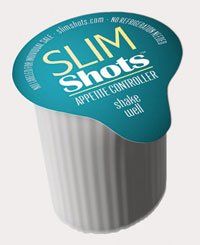Full Strength
Originally Published <a data-cke-saved-href="/sites/beta.nutritionaloutlook.com/files/articlelist.php?issueid=57" href="/sites/beta.nutritionaloutlook.com/files/articlelist.php?issueid=57" "="">NO January/February 2010
Originally Published NO January/February 2010

When a market research group reports that nearly 70% of Americans were overweight or obese in 2008, then there is a problem. Despite recent discussions over whether obesity rates might be plateauing, it's still pretty clear-many Americans are nibbling their way to higher health costs, worsening health conditions, and a deepening obesity epidemic.
Proposals like tax increases on carbonated beverages and high-sodium foods are floating through Washington, but major reforms remain unconfirmed. In the meantime, food, beverage, and dietary ingredient innovators continue looking for natural and effective methods for curbing weight gain. And with the market for weight-management ingredients sitting at a plump $2 billion in revenue, according to market research group Frost & Sullivan (San Antonio, TX), satiety remains one rapidly developing sector of the market.
"Satiety ingredients made up 25% of the market in 2008, with an anticipated growth of 9% in 2009," says Frost & Sullivan industry analyst Chris Shanahan. "That's above average for dietary supplements in general."
Ingredients meant to suppress hunger come in a variety of forms, including fibers, proteins, and botanical ingredients, with each working through different mechanisms of action. Here is a look at some key products in the marketplace.
HEALTHY INDULGENCES
THANKS TO FOOD INNOVATIONS, we can make a lot of the foods we eat healthier-and at no expense of enjoyment. Ice cream could make any list of foods to avoid in a healthy lifestyle, but established food technology is steadily improving how we eat this and other desserts.

Last fall, Gelita AG (Sergeant Bluff, IA) launched Optice for fat-free and reduced-fat ice creams. This gelatine powder is intended for providing fat-free and reduced-fat ice creams with near-identical values of mouthfeel, viscosity, freezing points, and ice crystal distribution. Tests conducted by the German Institute of Food Technology (DIL) even found that Optice ice cream could hardly be distinguished from standard ice cream.
Another ice cream innovation comes from Beneo-Palatinit (Morris Plains, NJ). The company has a long-established sugar replacer, Isomalt, which can lend "no sugar added" and "reduced calorie" labels to ice creams. Isomalt is derived from beet sugar, providing comparable sweetness, texture, and mouthfeel of sugar.
The Right Kind of Fat
One class of satiety products is reliant on natural oils for creating that feeling of fullness. DSM Nutritional Products' (Parsippany, NJ) Fabuless product, formerly known as Olibra, is a highly refined, stable oil emulsion that has seen continuous product launches and research for over a decade. Made up of 57.5% water, 40% palm oil, and 2.5% oat oil, Fabuless influences satiety by being recognized as an undigested fat until it reaches the ileum (the last section of the small intestine). While most foods have already been digested by this point, this is where Fabuless is considered to start working.
Inside the ileum, before being fully digested and absorbed by the body, Fabuless triggers satiety hormones. Scientists believe that its release of a hormone called glucagon-like peptide 1 (GLP-1) sends a message to the brain that the body is full-an activity commonly termed the "ileal brake." This has been demonstrated in human studies through evidence of slowed gastric emptying (the further emptying of waste out of the intestines).
It's an effect that has been demonstrated in human clinical studies published in journals like the International Journal of Obesity, the European Journal of Clinical Nutrition, and, using Fabuless, in the Scandinavian Journal of Gastroenterology, last year.
Fabuless is perhaps most familiar to consumers for its use in the coffee-creamer-size shots known as Slimshots, which were launched in the United States in 2008. Fabuless is sold in 20 countries, with further research still being performed globally. The international dairy leader Campina also released a yogurt drink with Fabuless in 2006.
Fiber-Full
Fiber is commonly linked to satiety for its bulking abilities. The flavor and ingredients company Frutarom USA (North Bergen, NJ) has its own fiber ingredient for satiety called FenuLife. It's a galactomannan (a polysacharride of galactose and mannose) that comes from the fenugreek herb. With a weight that's 90% fiber, FenuLife is all about this purported bulking effect.
When the body ingests galactomannan, it absorbs moisture, and a viscous mass forms around the inside of the stomach. "This viscous mass is likely what provides the benefits of FenuLife, including bulking in the stomach, slower gastric emptying, and slower absorbtion of nutrients," says Fenulife product manager David Hart.
In 2009, Phytotherapy Research published a study in which 18 adults supplemented with 4 or 8 g of FenuLife, or placebo. Patients supplementing with 8 g of FenuLife reported lower levels of hunger via visual analog scales, and ingested fewer calories in their proceeding meals. However, scientists observed no significant differences in energy intake throughout the remainder of each day. This might suggest that the reduced-hunger effect of FenuLife is short-term. The ingredient can be applied to beverages, foods, and capsules.
Potato Prospects
Researchers at Kemin Health (Des Moines, IA) believe white potato can provide an effect on satiety, too, and so unleashed their white-potato-based Slendesta product in 2006. Since then, the ingredient has been marketed in the United States, Europe, Asia, and South America to induce feelings of fullness.
Slendesta's active component is proteinase inhibitor II (PI2), and the company states that a dose of only 300 mg of PI2 is needed to do its work effectively.
PI2 is believed to release a hormone called cholecystokinin (CCK) throughout the body, which is normally released in the process of fat digestion. "CCK travels through the bloodstream and acts on various target organs to induce feelings of fullness and satisfaction," says Corey Jansen, associate product manager at Kemin Health. "These feelings of fullness and satisfaction help people to control between-meal snacking, thereby helping people manage their hunger and meet their weight-management goals."
One recent randomized, double-blind, controlled human study tested the effect of placebo, 15 mg of PI2, or 30 mg of PI2 on 196 healthy males and females for 12 weeks. After the final week, 5% and 8% of patients lost more than 10 pounds in the 15- and 30-mg supplementation groups, respectively. No weight loss over 10 pounds was reported by the placebo group.

The Future of Feeling Slim
New explorations in satiety could further affect the weight-management market in the coming years-or even months. P.L. Thomas (Morristown, NJ) is set to release its newest satiety ingredient to the U.S. and Asia, early this year. It's a proprietary extract of sapphron that works as a serotonin reuptake inhibitor, purportedly affecting the diet before food is eaten.
"Before you ingest the calorie as a fat, protein, or sugar, stop the behavior," says P.L. Thomas brand manager Eric Anderson. "This ingredient will help provide support to the body in such a way that you're not ingesting extra, unwanted calories, as opposed to trying to act on that calorie once ingested."
The ingredient underwent a double-blind study with 16 women in 2006, and an additional study with 61 women, to be published this year. Each study showed reduced sensations of hunger, not in obese patients, but in slightly overweight ones. Remarkably, the 2006 study concluded with 100% of patients on the new ingredient reporting reduced hunger compared with 0% of those on placebo. The most recent study reported increased snacking reduction and higher weight losses from supplementation of the sapphron extract over placebo.
Chr. Hansen (Milwaukee) offers another potential weight-management breakthrough, in a probiotic. Under the company's upstart ProSat program for investigating probiotic strains for weight management, one strain of Lactobaccilus casei was discovered to have "satiety potential."
"We have market confirmation from some of the world's leading weight-management experts in the commercial environment," says innovation director Benedicte Flambard. "We're still at an early stage, but we do believe that this could be big." Pending further positive research, the company expects to market its first probiotic satiety solutions within a few years.
The impact of GLP-1 on supplements, functional foods, and retail: a webinar from CRN
January 29th 2025The recent CRN webinar discussed GLP-1 medications' impact on supplements, functional foods, and retail, covering consumer trends, global market insights, retailer strategies, industry implications, and future opportunities for innovation.

.png&w=3840&q=75)

.png&w=3840&q=75)



.png&w=3840&q=75)



.png&w=3840&q=75)




